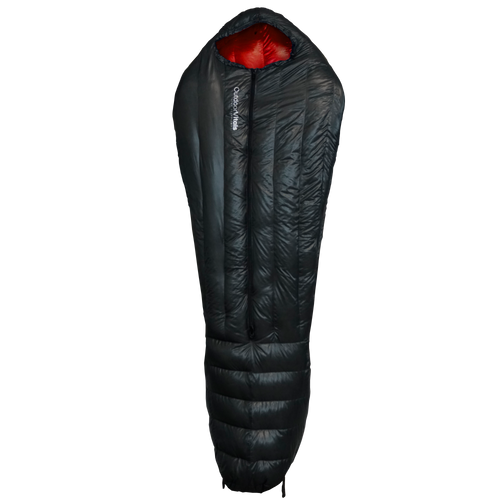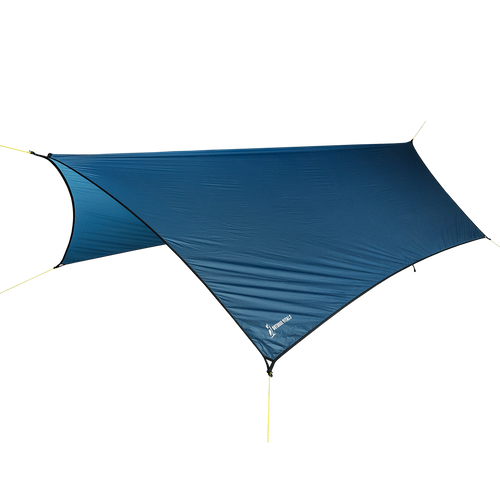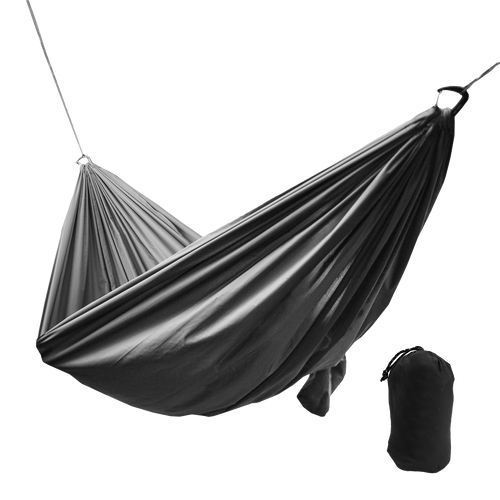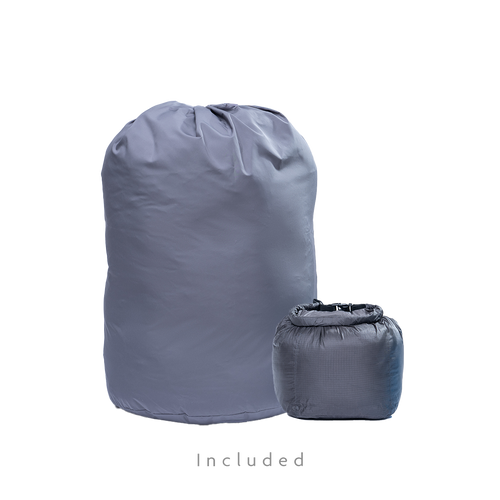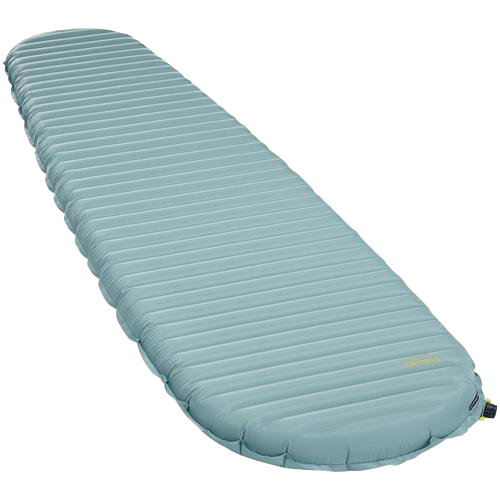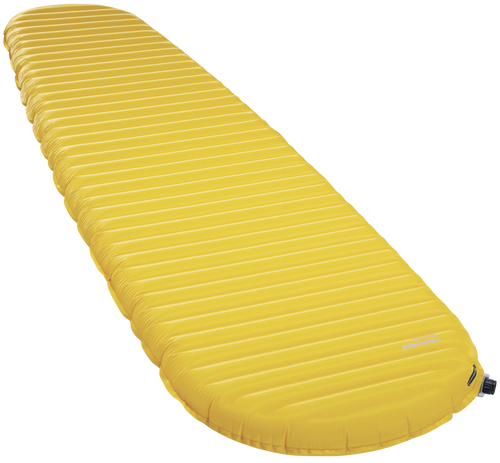Staying Warm At Night While Backpacking
The Importance of staying warm cannot be underestimated
Too many of us have found ourselves shivering on the trail, far far away from the central heating we’re used to in civilization. The weather conditions in the mountains can often be unpredictable. A scorching hot day in the desert can be followed by a freezing-cold night. The temperature changes get even more drastic in higher latitudes and high elevations. Given certain conditions, being unprepared in the wild can lead to hypothermia, frostbite, and even death. Therefore, it’s important to educate yourself as much as you can about staying warm, especially at night, while camping in the great outdoors.
Stay dry

The most obvious thing to help keep you warm at night is to keep your gear dry as best as you can throughout the day. Stripping off the cotton shirt you’ve been sweating in while hiking and replacing it with a dry thermal wool layer is a move that has made a massive difference for us here at OV.
Protecting your sleeping bag and clothing from water should be your number one priority. Rain jackets, rain skirts, gaiters, ponchos, and even lining the inside of your pack with a trash bag, are many of the useful tricks of the trade.
Keep your feet from freezing
If you’re hitting the trail in the winter, getting snow into your boots and getting your feet wet can put you at serious risk for frostbite (gaiters can be your best friend in this situation). If your feet are wet in the winter, guess what? They’re also cold.
Just getting in your sleeping bag will not necessarily help you warm up. Your sleeping bag is not an electric blanket. If you put something cold in an insulator (which is what a sleeping bag is), it will just help keep it cold, not warm it up. Your feet need to be warm before going into the sleeping bag.
Whatever it takes to warm them up (exercising them for better blood flow, warming them by a fire), do it before hopping into your sleeping bag. It might also be a good idea to have dry wool socks ready to slip into at that moment.
Note: There is actually one extremely effective step you can take to ensure your feet stay warm on your trips: bring puffy booties.

Puffy booties are designed to be lightweight, and give your feet just an extra bit of insulation at night or at camp.
But there's one problem with most booties: if the down insulation gets wet, they fail!
We've done something about that and designed booties that are ultralight, warm, and WON'T fail even if they get wet! The LoftTek Hybrid insulation inside of them was designed to stay lofted and warm even if it gets soaked.
That means you can count on warm feet at the end of the day no matter what.
To see more details about the LoftTek Hybrid Booties, Click Here.
Cotton kills
The same strategy used to keep your feet warm can be used for the rest of your body. Take off that damp cotton shirt you were sweating in all day and slip into some wool thermals. Ever heard the saying, “cotton kills”? That’s because cotton soaks up water and keeps it next to your body. Wool, on the other hand, works to wick moisture away and keep you dry out on the trail. Not only that, but wool will also insulate even when it's wet.

Not all wool is created equal. There are different blends of wool mixed with other materials in different ratios, which affects performance. Our NuYarn DragonWool Hoodies, Zipoff Thermals, & Boxers combine patented no-spin merino wool with a jersey face polyester to create the most advanced performance fabric to be used in a base layer! It will dry 4 times faster than a typical merino wool layer, while staying warm yet breathable.
The water bottle trick
Another little trick for the cold-blooded ones out there: fill a water bottle that you trust not to leak with hot water and stick it inside your sleeping bag. This will help keep your extremities warm throughout the night. You might even get too warm.
Dry, but still cold

Is staying dry the only factor keeping you cold at night? Let’s say you’re out in the desert, dry as a bone. Suddenly the temperature plummets to 30°, you’re in your 15° rated sleeping bag, and you still get cold? Well, you better pay attention to the next section where we explain to you what sleeping bags ratings really mean.
Temperature ratings might not be what you think

In retail stores, companies are asked to give sleeping bags a “lower comfort rating” based on an EN testing system. The lab that does the tests will give the company a “survival rating”, a “lower comfort rating”, and a “comfort rating”.
The standard rating in the outdoor industry is the "lower comfort rating," which means the rating on your sleeping bag is actually about 10° colder for men and 17° degrees colder for women (unless it’s a women-specific bag, which should be only 10°) than would actually be comfortable to sleep in!
In other words, if you have a gender neutral 15 degree bag from most reputable brands, that sleeping bag will be comfortable and warm and 25 degree weather for men, or 32 degree weather for women.
Outdoor Vitals uses this same industry standard with our sleeping bags, but we go beyond that and actually test out all our gear in the field personally! We can vouch for the warmth of our bags because we've used them in the temperatures we're claiming ratings for. Some of our favorites are the Summit Down Sleeping Bags, which have been our proven flagship sleeping bags for years.
But what about top quilts? Top quilts can’t be rated in quite the same way as sleeping bags and in the cottage industry of top quilts, no industry standard is in place as of yet. At Outdoor Vitals, when rating both our top quilts and our bags, we try to look at other factors, including the size of the quilt, the fill-power, and then we will actually go out onto the trail and sleep within 5° of their estimated rating in order to test it out. That way, we can feel confident enough to look you in the eye and say “this is a zero degree bag”.

While there isn't yet a standardized EN rating for top quilts, they are a phenomenal way to stay completely warm on your backpacking trips while getting rid of a bit of extra weight and bulk in your pack. Just make sure you purchase from a brand you trust!
To learn more about top quilts, check out this article: Everything You Need To Know About Top Quilts
Watch this video to learn more about sleeping bag ratings:
So, you understand sleeping bag ratings now, and know to add a few degrees to get the true “comfort rating”. Just a little bit of arithmetic can go a long way when it comes to choosing one for your next trip. However, if you don’t have an insulated pad, almost none of that will matter.
I have the right sleeping bag, why am I still cold?!
If we were to guess, 80% of our customer complaints are reports of a cold night’s rest with one of our sleeping bags. Yet, when we inquire further, we inevitably find out that the person using the sleeping bag was sleeping without an insulated pad underneath them.
When the material on the underside of your sleeping bag gets compressed, there is no insulation (which is why many backpackers are switching to top quilts, since many see the underside of a sleeping bag to be useless). Those cold temperatures coming from the ground are basically going directly into your bag. In the end, you’re going to need a good sleeping pad if you’re going to stay warm in cold temperatures.
What kind of sleeping pad do you need?
Sleeping pads are generally rated in the R-scale. A 1 R-rating gives you basically no insulation, and an R-value over 5 or 6 is something you’d want in the winter months.
For most backpackers, we suggest getting a good 4 R-value sleeping pad. A 4 R-value pad is considered “3 seasons”, or a pad that should be warm enough for spring, summer, and fall. If you have a 4 R-value pad and you think the temperature is going to get lower, we suggest “stretching” the R-value of an insulated pad by layering another pad underneath it. Those thin 1 R-value pads can work great for this. In a bind, you can even use one of those noisy little space blankets and lay it on the top of your pad for some added insulation. If you find yourself camping below 15°, say in the mountains of Colorado in the winter months, then get the highest R-value you can.
My sleeping pad loses air at night!
Just like when you compress the bottom of a sleeping bag, a deflated sleeping pad is limited in terms of its ability to keep you warm at night. Unfortunately, even the best sleeping pads seem to lose some air during the night. Assuming it’s not a leak (which happens--always check your gear before hitting the trail!), then the loss of air pressure is typically due to blowing up the pad when the air is warmer. As it cools, the air will naturally start to condense. There’s another element at play though. The fabrics the pad is made out of will inevitably start to sag (polyester does typically sag less, but there’s not much getting around the laws of thermodynamics).
A neat trick in dealing with the issue of your sleeping pad losing pressure is to blow up your pad as soon as you get to camp. This allows the air in the pad to stabilize and allows the pad to get settled before bed. Then, when you’re about to get some shut-eye, “top it off” by blowing into the pad a little more, and the pressure should stay relatively stable throughout the night.
For more info on sleeping pads and making sure you stay warm and comfortable on the trail, watch the video below:
Now you’re ready
In summary, to keep yourself nice and toasty at night: Keep your gear dry. Take off your wet clothes and get into some dry wool layers before hopping into your sleeping bag. Make sure you understand the temperature ratings of both your sleeping bag and your sleeping pad and plan accordingly. Finally, make sure you blow that sleeping pad up as soon as you get to camp, and top off that air before getting into bed so that it doesn’t lose as much air pressure throughout the night.
By following these tips, you'll be able to stay warm on all of your backpacking trips. You won't have to worry about whether or not your gear will work properly, and you'll sleep great! It's our mission to help you improve your life through meaningful outdoor experiences, and we promise that by putting this to the test, you'll notice a difference.
Keep Living Ultralight, & we'll see you on the trail!
2 comments
Great Blog reminders are always helpful. You never know when something clicks.
Thanks
This was a very helpful and needed. Thanks so much for sharing your thoughts and experiences.

